Depending on the type of grow and the strain grown, harvesting time for cannabis plants can be shorter or longer. Although it’s clear that all of the time spent growing is for the purpose of harvesting, if it’s not done at the right time you’ll be ruining a lot of hard work and the time it took to get there.
The best time to harvest cannabis depends on the conditions in which the plants are in and the results you’re looking for. In order to figure out the perfect time and prepare accordingly, you can use the information that you already have on the strain or clone that you’re growing. Each seed bank indicated the approximate flowering dates of their strains, as well as an approximate harvest date. This allows you to have a general idea of when you’ll have to stop feeding etc.
As well as these previous points, which can help you to have a general idea of an approximate harvest date, you should also keep in mind a few important factors that you can observe in your plants.
When to Harvest Cannabis Plants
There are two main methods that you can use, alongside the information you already have, in order to determine the correct point at which to harvest cannabis. These two methods can be used together or on their own, however you’ll get more precise results if you use both factors together.
- Depending on the pistils
Pistils are small white hairs that generally grow two by two in flower calyxes (buds) on cannabis plants. They’re designed to catch pollen produced by males and create cannabis seeds.
During the first flowering weeks, pistils are an intense white colour, and they grow straight up. As the plant matures, pistils go a sort of brown/orange colour, while bending and curling.
Pistils will continue to appear during the flowering period, so they can be found during different phases or stages. They don’t always change state due to growth – sometimes quick changes in temperature, low humidity, excess fertilizer, the use of insecticides or other factors can degrade them or change them.
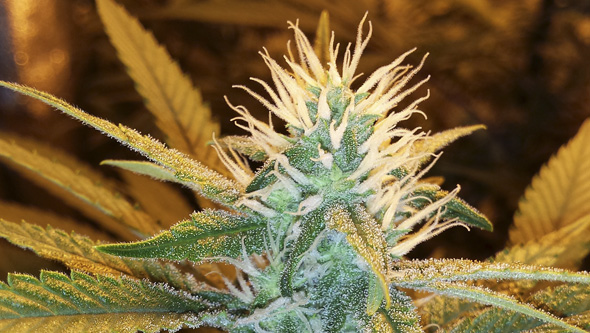
When to Harvest
- It’s recommended to harvest your cannabis plants when between 60 and 80% of the pistils are mature (when they’re an orange/brown colour).
- Keep in mind the seed bank’s recommendation and the previous factors. For example, if the plants are in their 5th flowering week in an 8 week strain and most of the pistils are brown, they have most likely become degraded for some reason or other (pesticides, temperatures, excess rain etc.)
- Depending on the State of the Trichomes
Trichomes are epidermic cells that appear on the surface of flowers and leaves on cannabis plants, and evolve from being a simple sphere to having a stem, similar to the shape of a mushroom. Depending on the strain and the general conditions of your plant, the quantity and size of the trichomes can be larger or smaller. Trichomes contain the main active substances in cannabis, such as THC (tetrahydrocannabinol), as well as some terpenes which interact with the effect produced by cannabis.
In order to properly observe trichomes, you’ll need a magnifying glass or a 45x to 200x microscope (these are the perfect parameters). The colour of the trichomes is the most important part, letting you know when they’re ready. They change colour as they grow during the flowering stage.
- During the first flowering half trichomes are almost see-through and crystalline.
- During the second flowering half, as the plant matures, they’ll begin to go a milkier colour until they go almost entirely white.
- Once trichomes degrade, they go an amber sort of colour.
When to Harvest?
- We recommend harvesting when 80 – 90% of the trichomes have gone milky, with around 10% having gone amber at this stage; this is the optimal point for harvesting. If you want to get an effect that’s true to the strain you’re growing, we don’t recommend harvesting while trichomes are still see through or when they’re all amber.
- Just like with pistils, trichomes don’t all grown together, so they all won’t be at the same stage; use common sense and harvest when most of the signs are there.
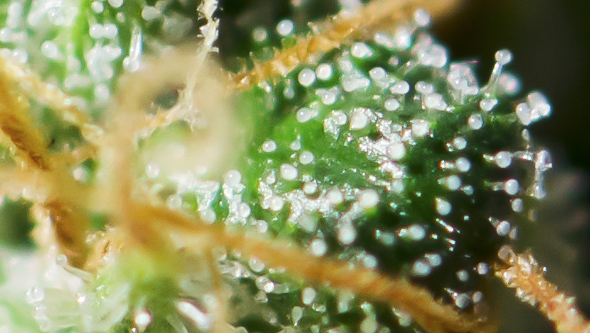
What Happens if you Harvest too Early?
During the last flowering weeks, cannabis plants tend to focus their metabolism more on growing their flowers (in truth, they grow seeds during this time, although the assumption is being made that you didn’t allow seeds to be produced).
During the last stage, when plants are fully maturing, they won’t grow or fatten up, they’ll only be producing substances that protect your plants. These substances can be found in trichomes. Additionally, many cannabinoids, terpenes and essential oils begin becoming more intense towards the second half of the flowering stage.
Cannabinoids are the main compounds, alongside terpenes, that produce the effects of each strain. For THC (D9-THCA) to be active, it needs to be decarbed to lose its OH and provide psychoactive properties. This happens as the plant matures, dries and is cured. If THC degrades, it turns into CBN, a cannabinoid that produces drowsiness and a heavy sensation. CBDa also needs to be decarbed and is also degraded into CBN. CBD is not psychoactive, although it does have therapeutic properties and it depends mainly on the strain of the plant grown.
Signs it’s too early to harvest
- Too many transparent trichomes.
- Too many white, stiff pistils.
Conclusion
- If you harvest too early, the amount of CBN found in the plant will be lower, although so will the amounts of THC and CBD, which makes for a softer and more active high.
- Additionally, harvesting early usually means cannabis is less aromatic and flavorful compared to properly grown and matured buds; essential oils and terpenes grow more during the last stage.
What Happens if you Harvest too Late?
If you’ve let your plants grow for too long, a large amount of cannabinoids such as THC degrade and turn into CBN, losing psychoactivity and increasing its narcotic effect.
Plus, the quality of composition and structure of the cannabis itself degrades, which leads to less intense aromas and flavours. Cannabis terpenes, the compounds responsible for aroma, are volatile elements and evaporate with heat and air, so the longer they’re exposed to the environment, the more they’ll evaporate.
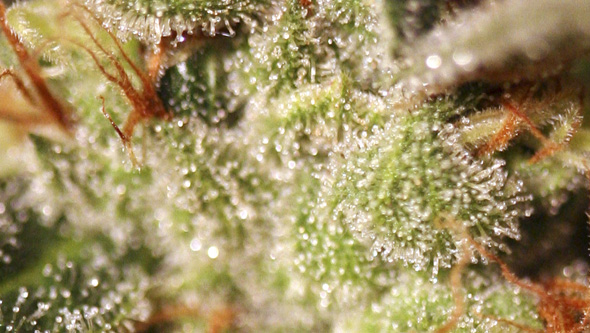
Symptoms of a late harvest
- Amber and dark orange trichomes.
- Practically all of the pistils are brown.
Conclusion
- If you harvest your plants too late, THC and CBD degrade and turn into CBN, which makes for a more narcotic and heavy effect (don’t confuse this with the relaxed effect produced by most inidcas).
- Harvesting late can cause your cannabis to have less flavour.
General Advice
- Using this information, plant observation methods, the seed bank’s indications and maybe some advice from a grower you know, you have the skills needed to know exactly when to harvest your cannabis plants.
- To correctly harvest your plants, make sure to flush out their roots around 10 days before harvesting, and if you can, reduce the light intensity and temperature during this time.
- Make sure to allow your plant to grow and mature correctly so that you only have to harvest them once; harvesting on different days can make for lower quality.
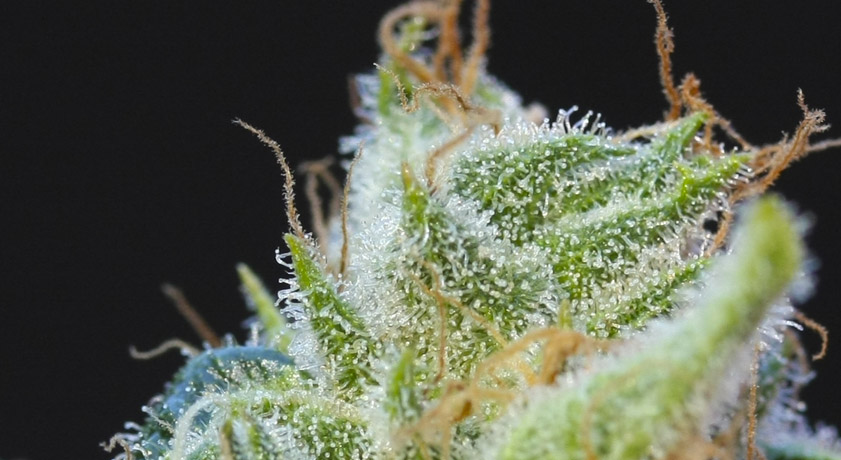


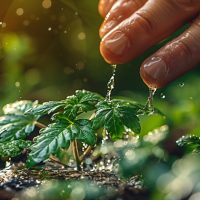
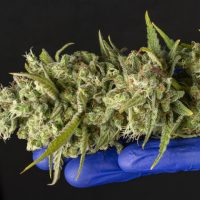
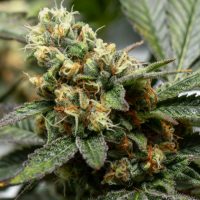
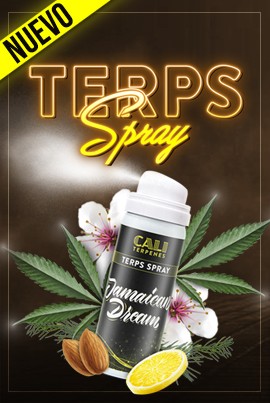
4 responses
My girls have been flowering for almost 9 weeks. Full cloudy with some a few half cloudy. She just won’t get ready! All the pistils have turned orange brown and curled in. What’s going on? Is it ready?
Hello,
Without seeing it, it’s difficult to assess. Ideally, you should use a magnifying glass with at least 45x magnification to check the color of the trichomes. They go through three stages: nearly transparent, milky, and finally oxidizing to a more amber color. The optimal time is when 90% of them are milky.
You can start distinguishing it with this type of magnifying glass:
https://www.lahuertagrowshop.com/en/gardening-accessories/harvesting-cannabis/magnifying-glasses-microscopes/
Regards,
Plant is wilting. Tricoomes are still clear. Should I harvest now.
Hello,
We need to identify why the plant is wilting; it could be due to fungi, weather conditions, etc. If it’s caused by a fungus, we don’t recommend consuming it as it could be harmful to health. Without an image, it’s impossible for us to make a well-founded assessment.
Best regards.